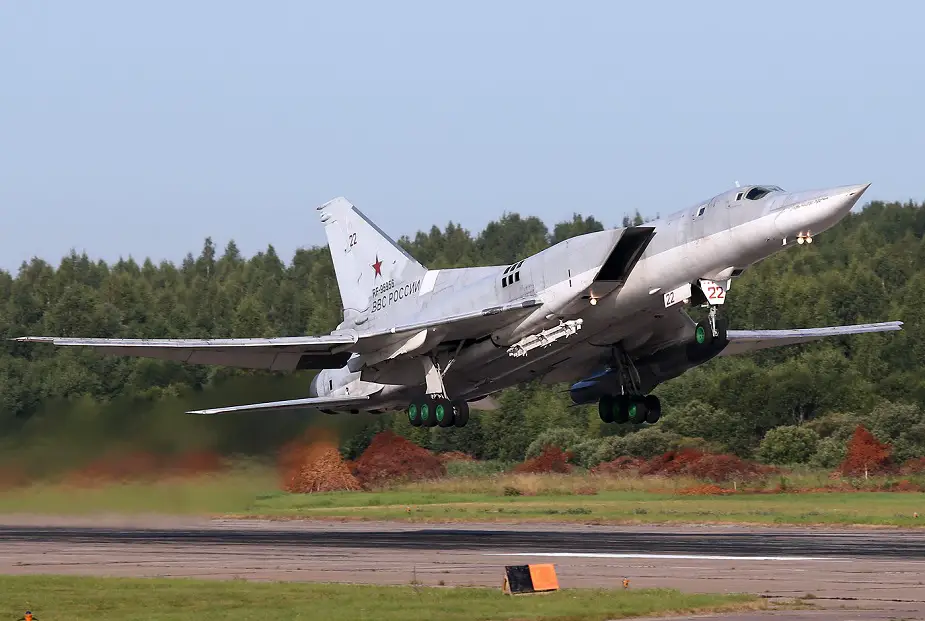The modernization of Tu-22M3 bombers and the development of new arms for them, including supersonic Kh-32 antiship missiles and Kinzhal air ballistic missiles, triggered a discussion about the future of the upgraded fleet. Proposals were voiced to return the bombers to the naval aviation from where they were withdrawn in 2011, the Izvestia daily writes.
 Tupolev Tu-22M-3 (Picture source: Dmitriy Pichugin)
Tupolev Tu-22M-3 (Picture source: Dmitriy Pichugin)
The naval aviation was the main Tu-22M3 operator, as it received over 160 aircraft out of a total of 270. The rest went to the Air Force. A sharp reduction of defense appropriations in the post-Soviet period accelerated the degradation of the naval aviation, as the allocations were mostly used to maintain available warships.
In 1990-2000s, all old aircraft were withdrawn from naval aviation and the number of Tu-22M3 radically decreased. By 2011, few bombers remained operational and most of their main weapons - Kh-22 antiship missiles were decommissioned.
The transfer of the remaining Tu-22M3 to the Russian long-range Air Force seemed to be the only appropriate way to keep the aircraft. Major funds were necessary to restore the combat capability of naval aviation regiments. It was a difficult problem. Although the general financing of the armed forces was on the rise, other guidelines, such as the air force, air defense and strategic nuclear forces were a priority.
The naval aviation remains in a plight and operates an ageing fleet of airplanes and helicopters. A lack of modern antisubmarine aircraft and the absence of any reports about the design of new-generation shipborne helicopters are fraught with major problems in antisubmarine defense in the foreseeable future. At the same time, the attack potential of the naval aviation becomes vital as standoff grows with NATO and allies which dominate at sea.
In 2018, the first upgraded Tu-22M3M took off in Kazan. Thirty aircraft are to be modernized in the coming years. The Russian Aerospace Forces operate over 60 Tu-22M3 and all of them can be upgraded.
However, the number is insufficient to restore the naval aviation with at least one regiment for each fleet - the Northern and Pacific. It would be necessary to supply over 50 bombers, including to the training center. After that the operation of Tu-22M3 by the Aerospace Forces can be terminated.
Theoretically, the number can grow if both operational and stored Tu-22M3 are upgraded. However, the storage conditions are no good for big aircraft.
Defense Ministry sources told the newspaper the transfer of the available Tu-22M3 fleet can be justified in case the bombers withdrawn from the Aerospace Forces are replaced with Tu-160M aircraft which are being produced in Kazan.
It is possible that the best option to restore the naval aviation is to equip it with Su-34 bombers. The aircraft has been supplied to the Aerospace Forces since 2000s and performed reliably with high characteristics also in Syrian combat. Su-34 is serially produced and has a set of modern arms. Air refueling and cockpit equipment provide for long flights without exhausting the crew which is important for naval aviation missions.
As frontline aviation is to be rearmed from Su-24M to Su-34 in the coming 3-4 years, it would be appropriate to consider continuing batch production of the aircraft with necessary improvements for the Russian naval aviation. Su-34 price and production possibilities allow supplying the fleet with 200 bombers and guaranteeing the Navy a capability to fight any adversary in coastal waters and seas in the North and the Far East.
Naturally, it does not drop the necessity to comprehensively rearm the naval aviation. The fleet suffers a deficit of modern aircraft of all types and has to keep such planes, as Be-12. Besides attack jets, it needs prospective amphibious planes, helicopters and airlifters to supply island and remote bases, the Izvestia said.
© Copyright 2019 TASS. All rights reserved. This material may not be published, broadcast, rewritten or redistributed.
















